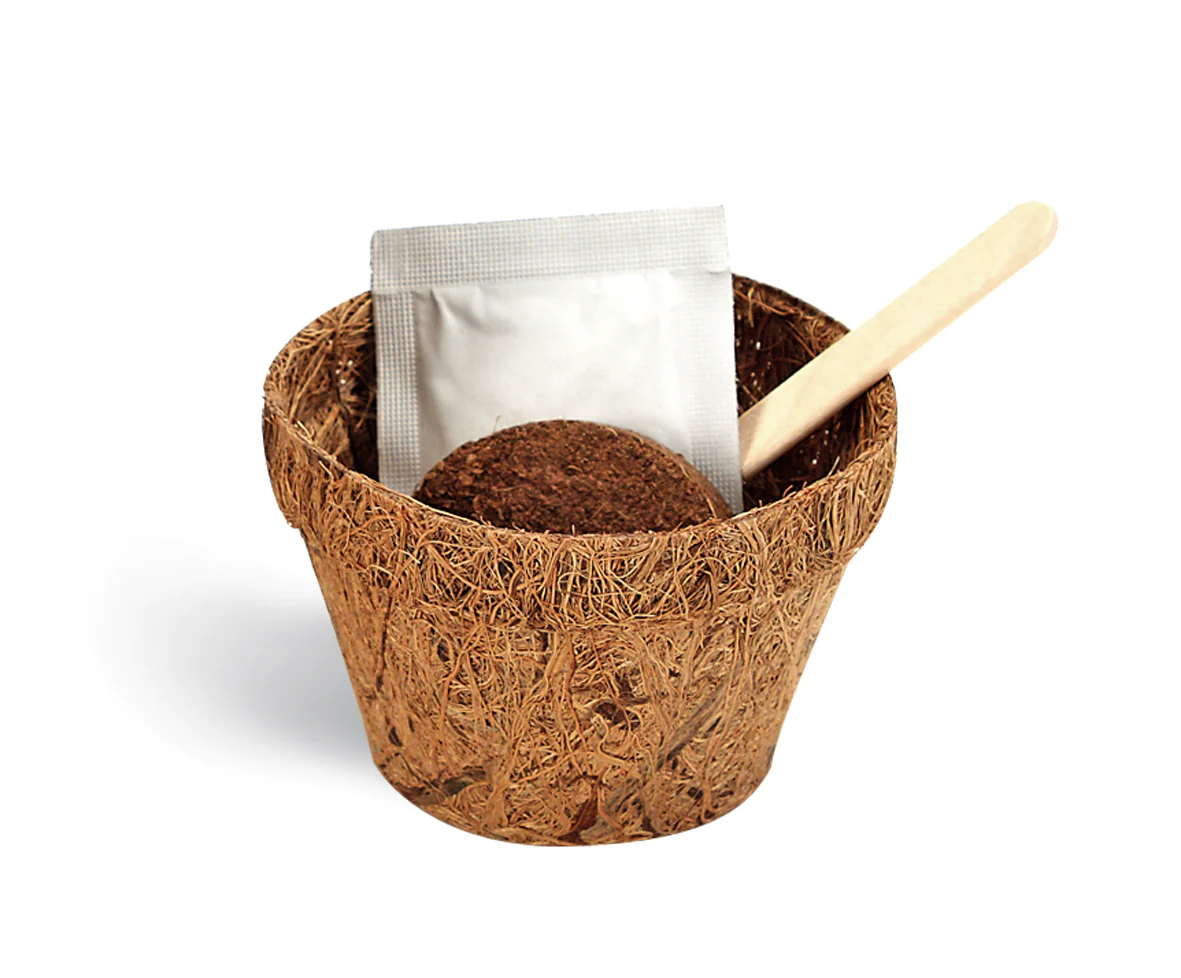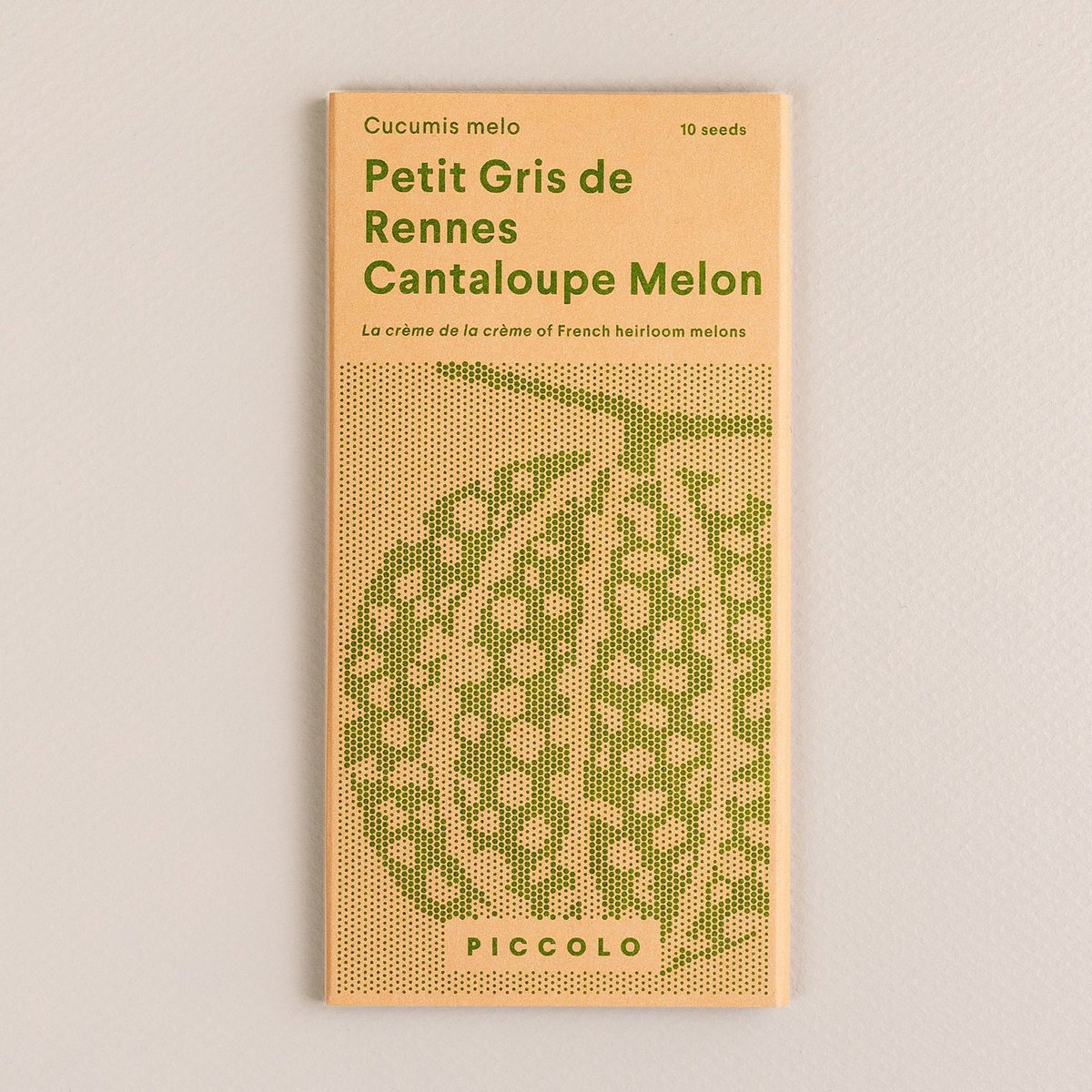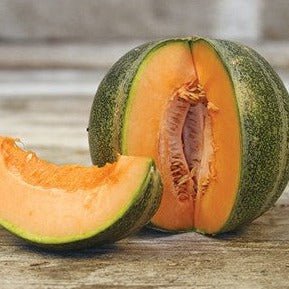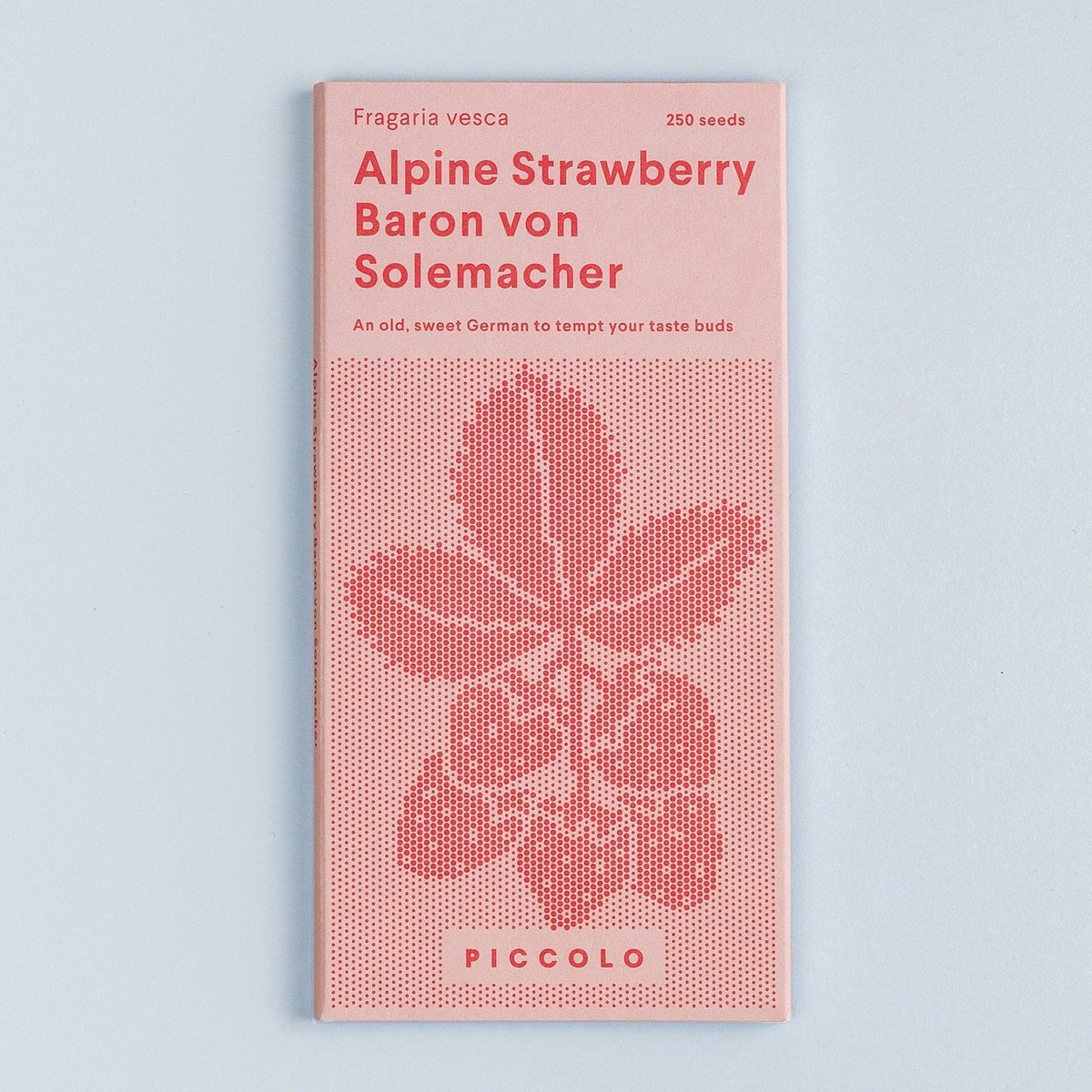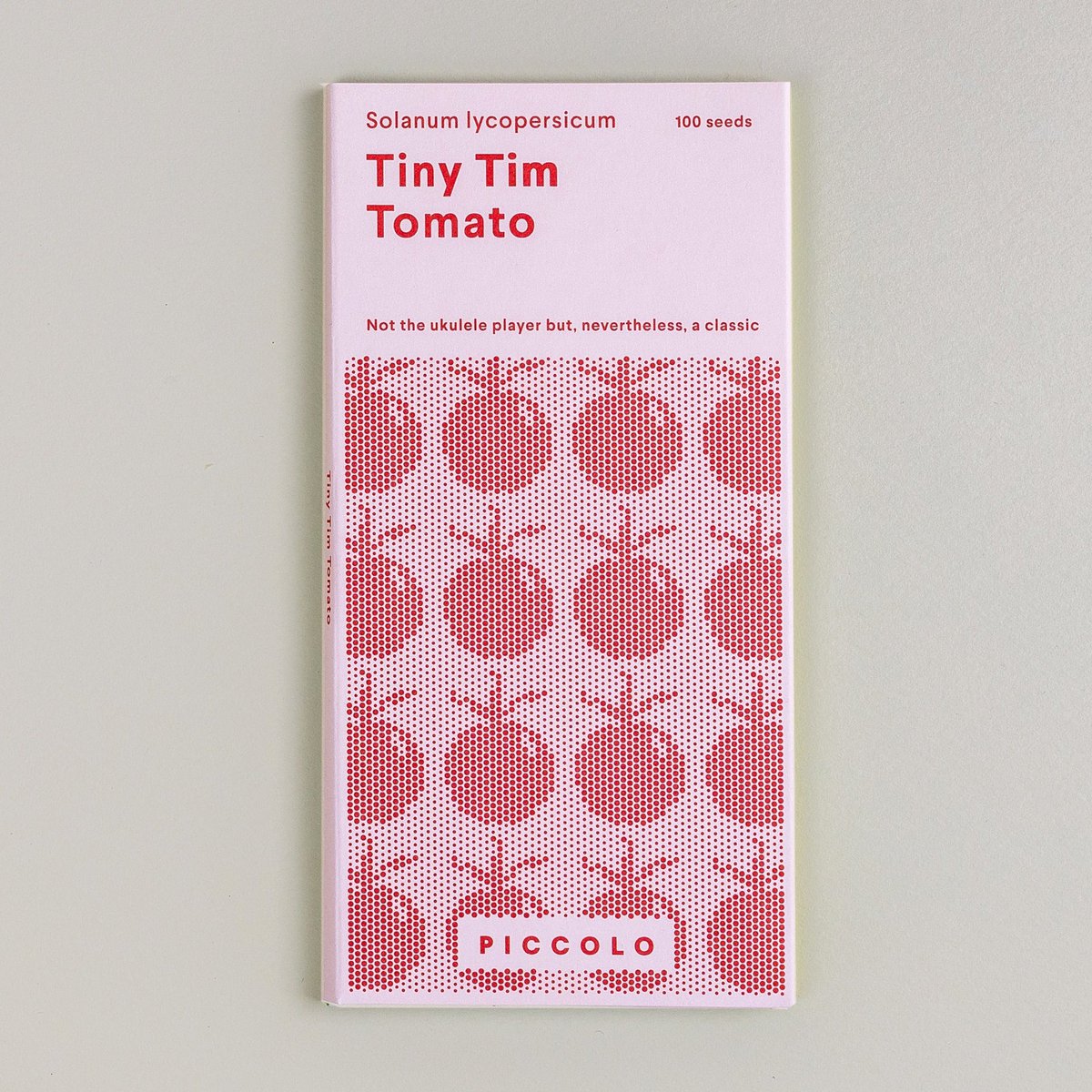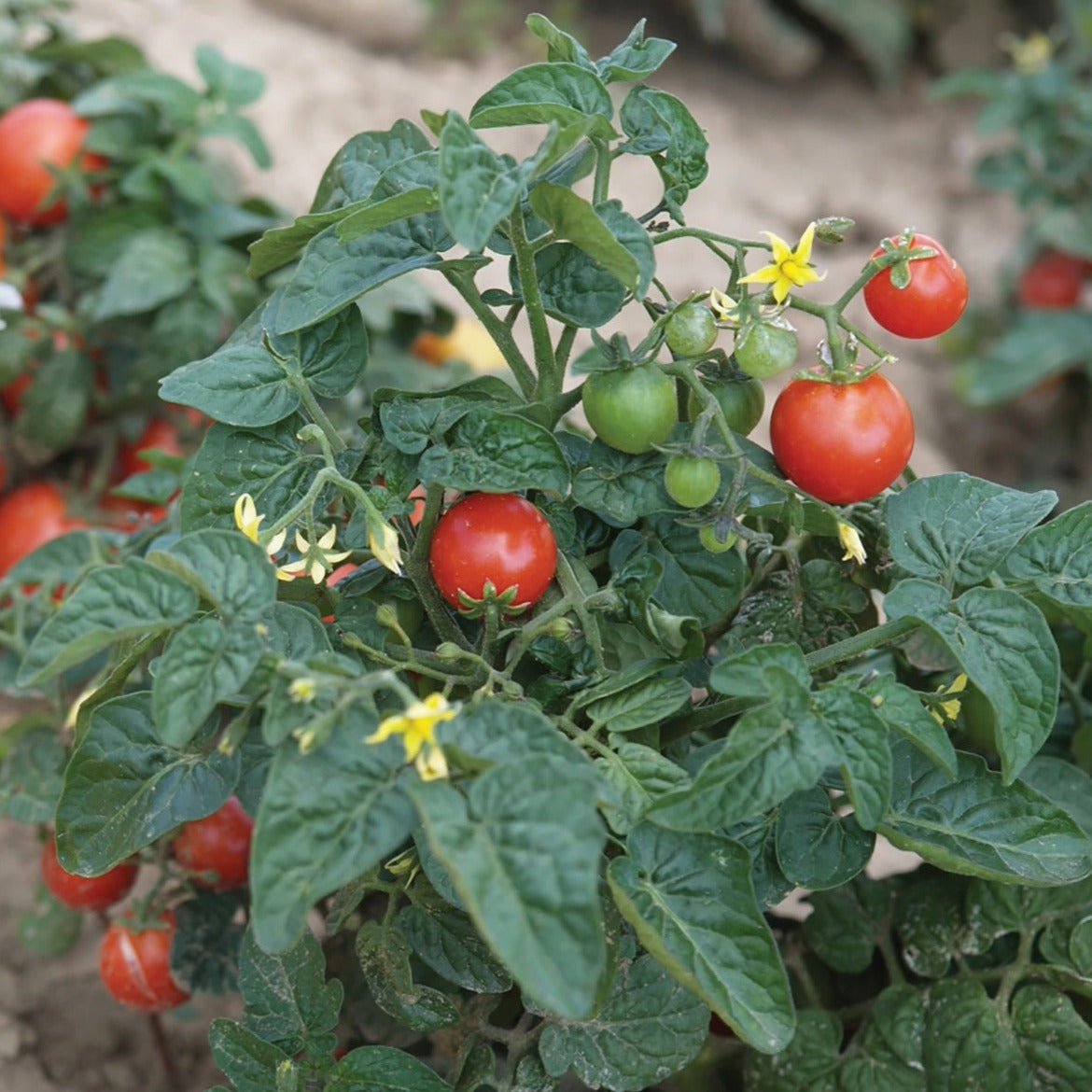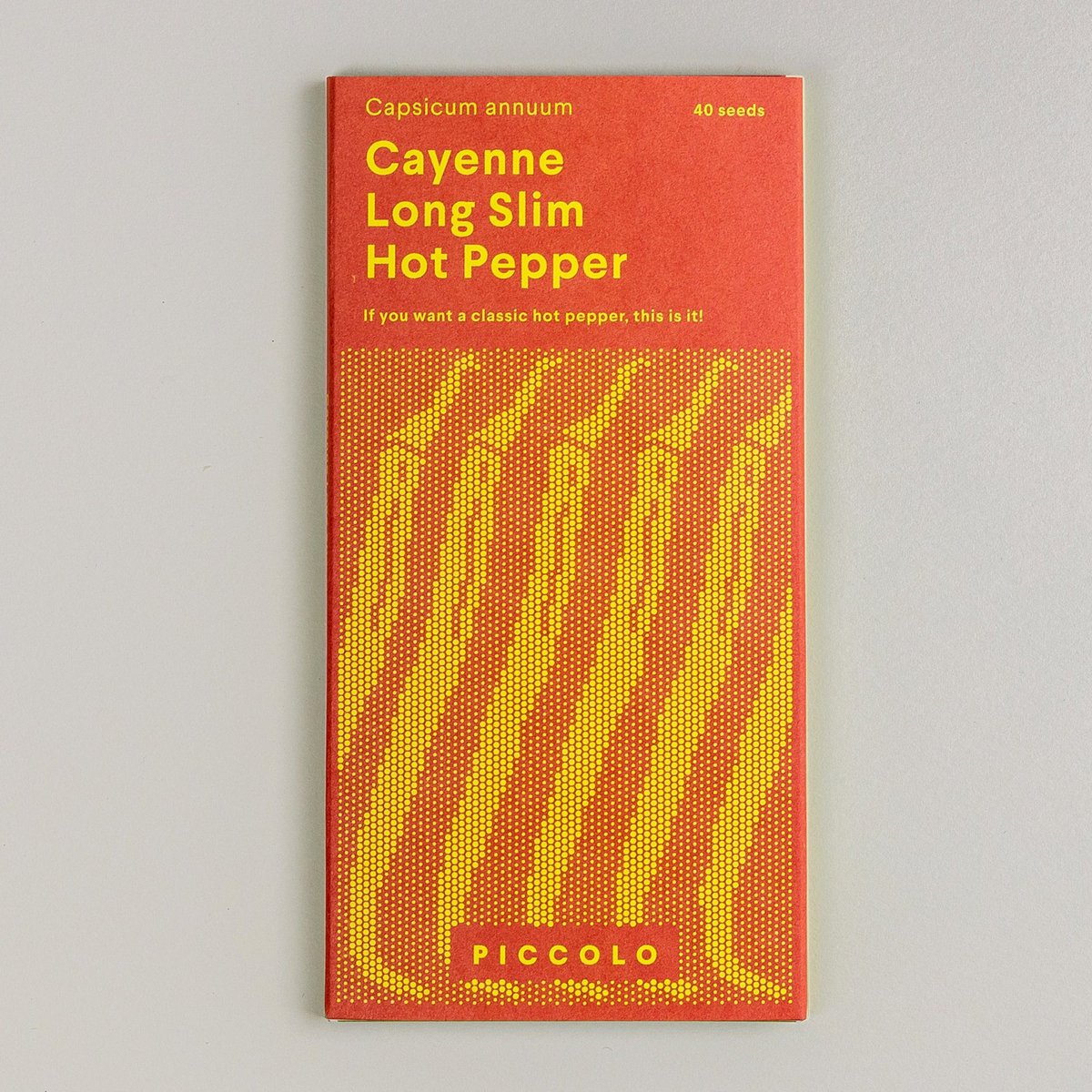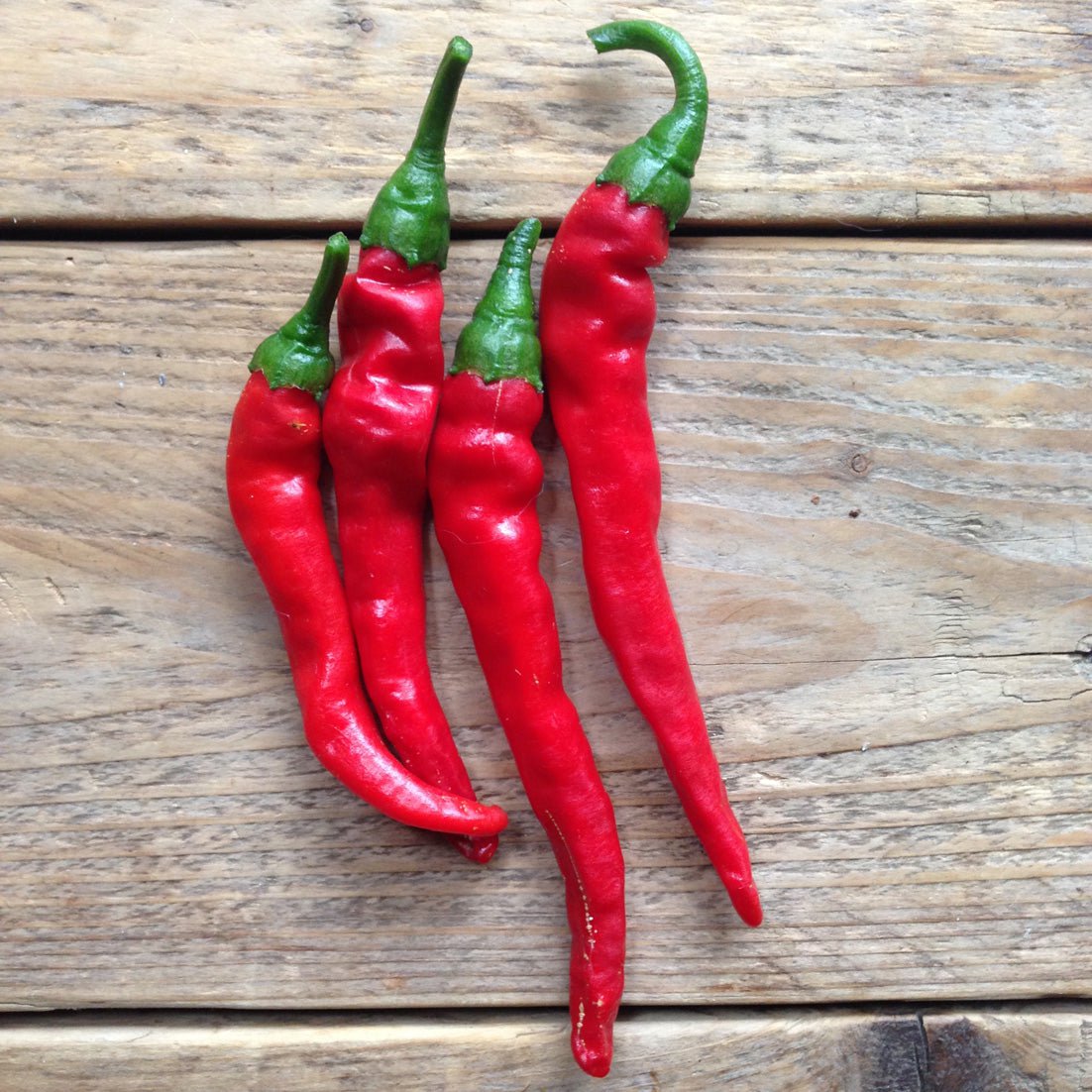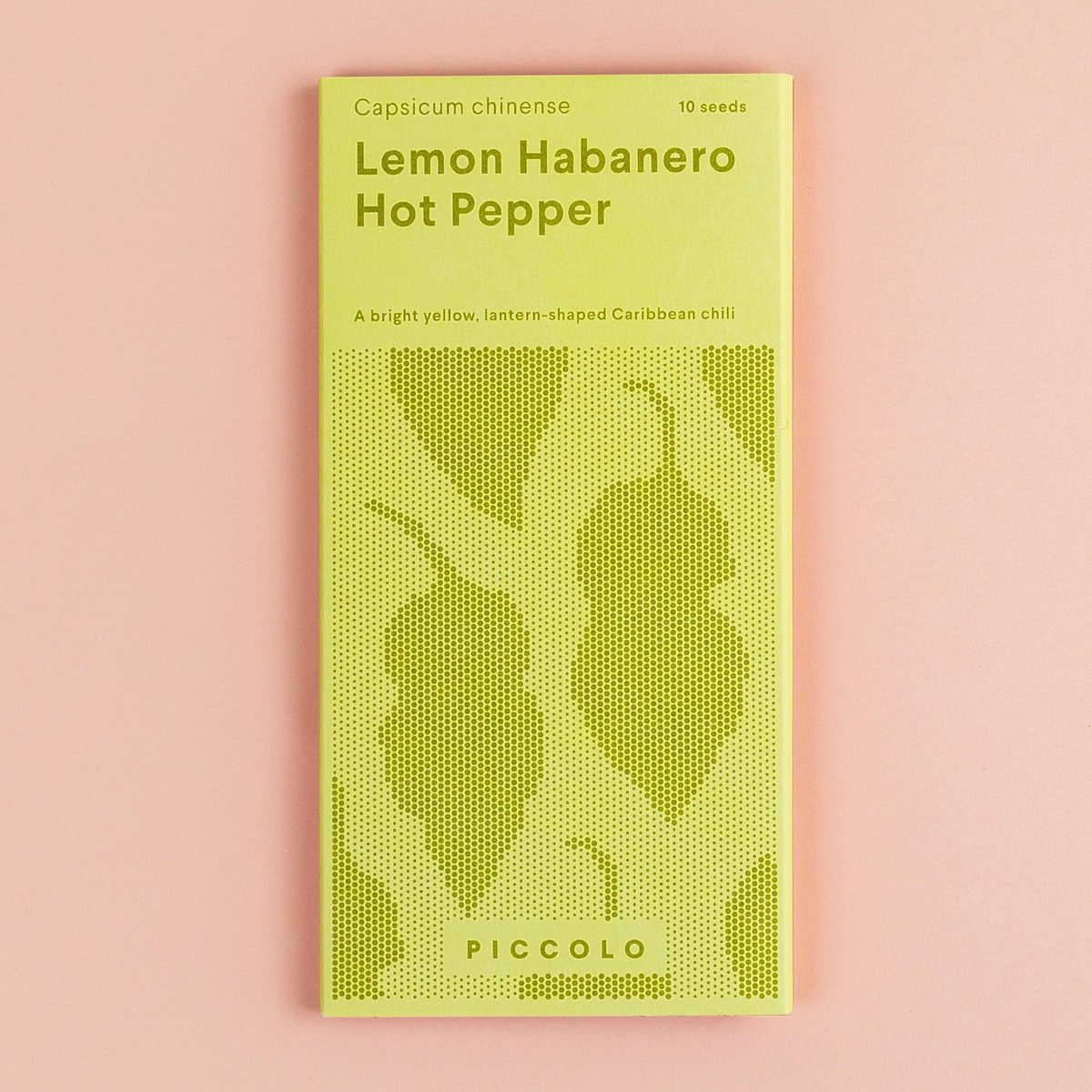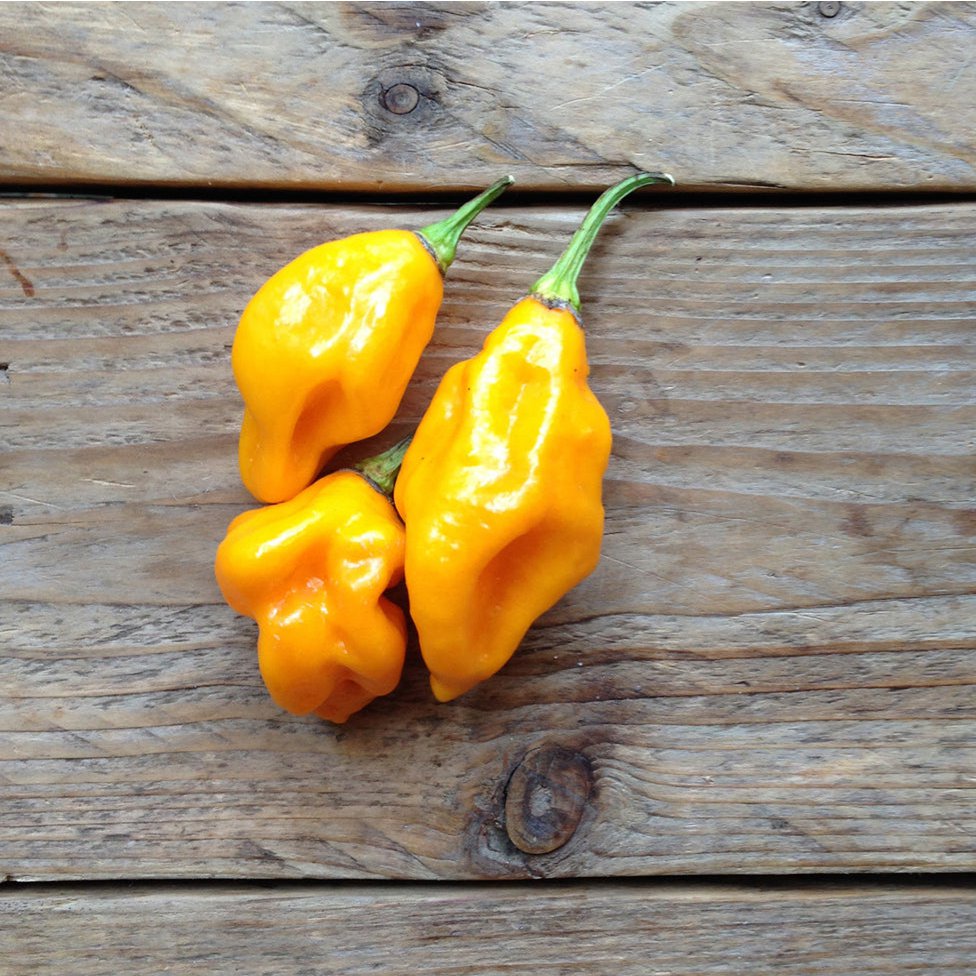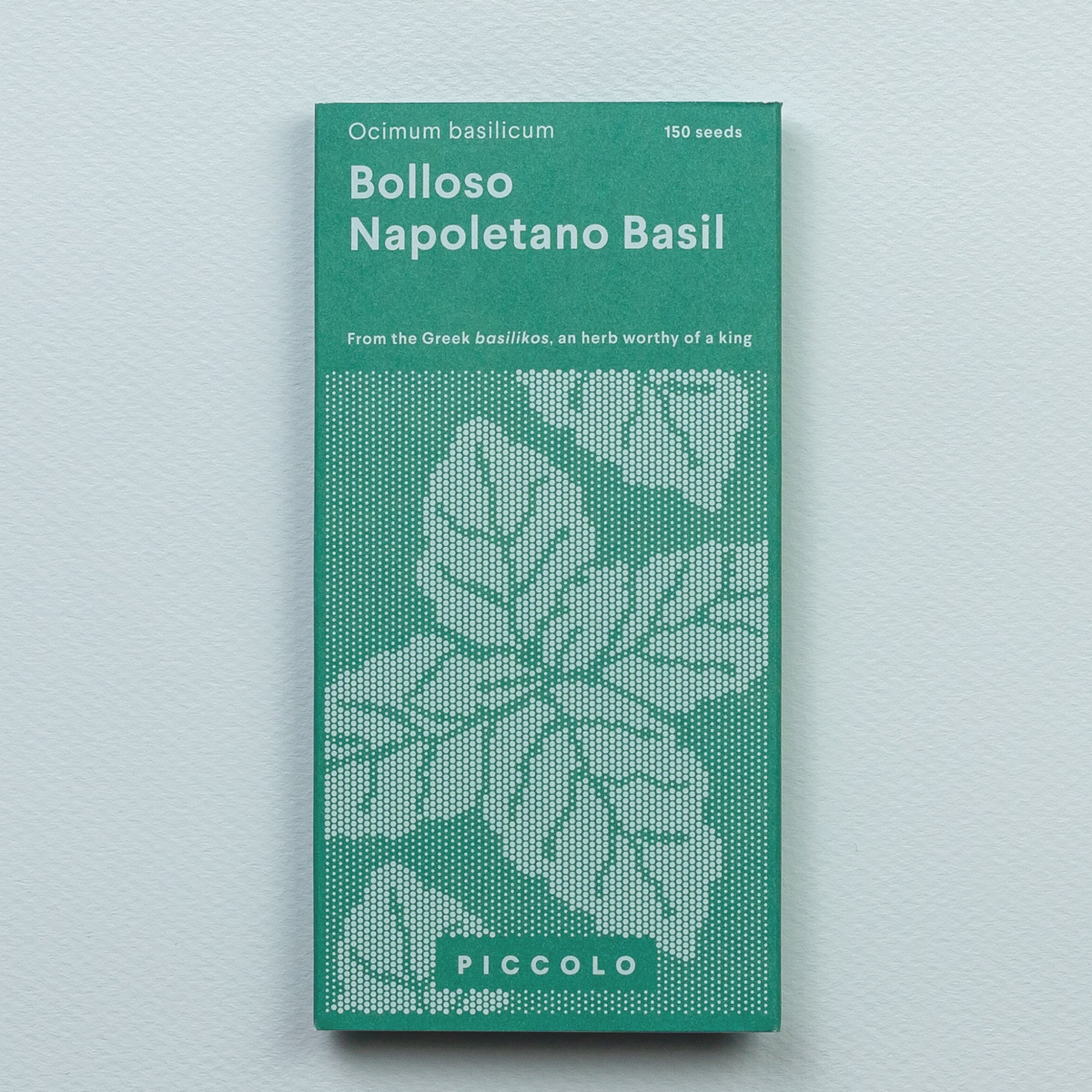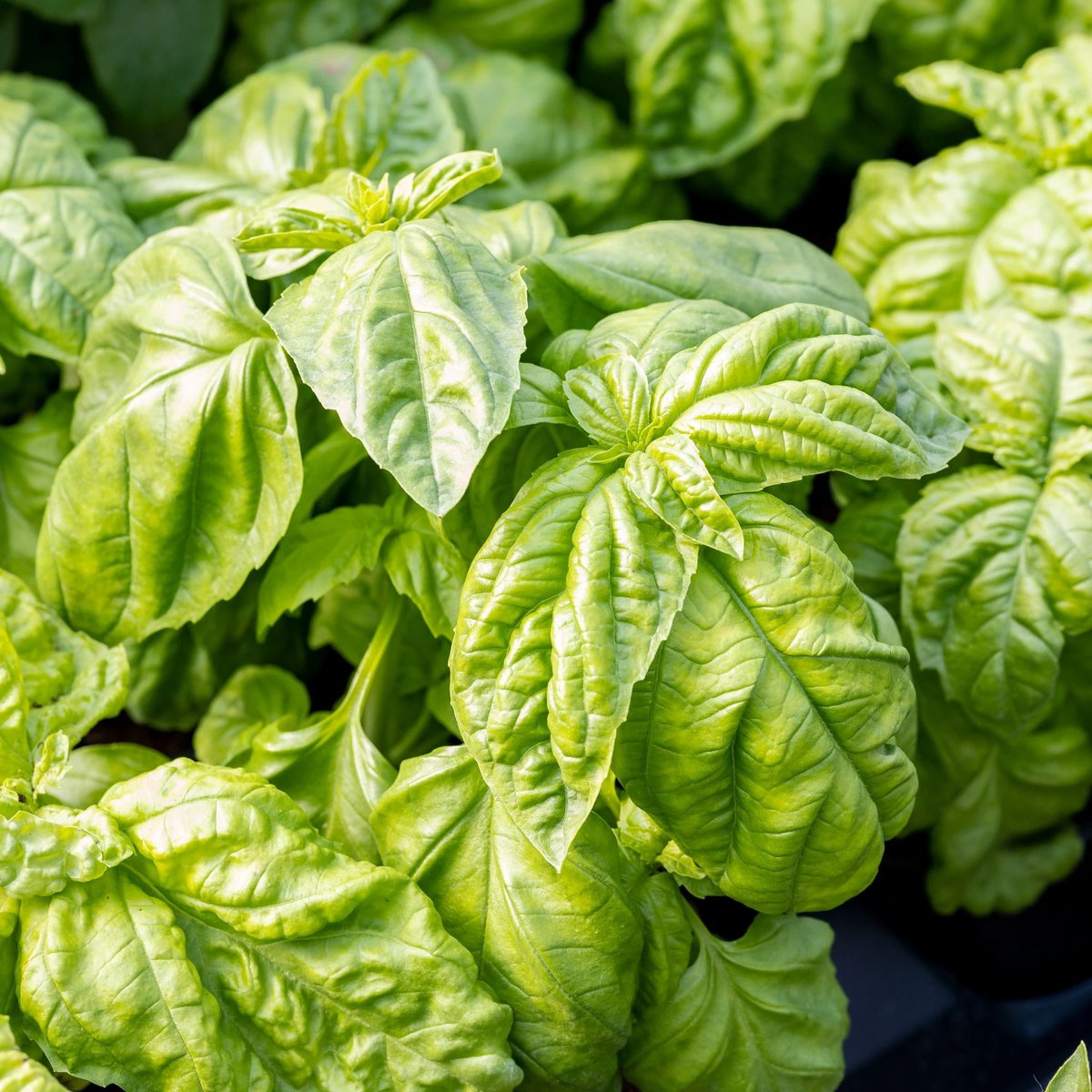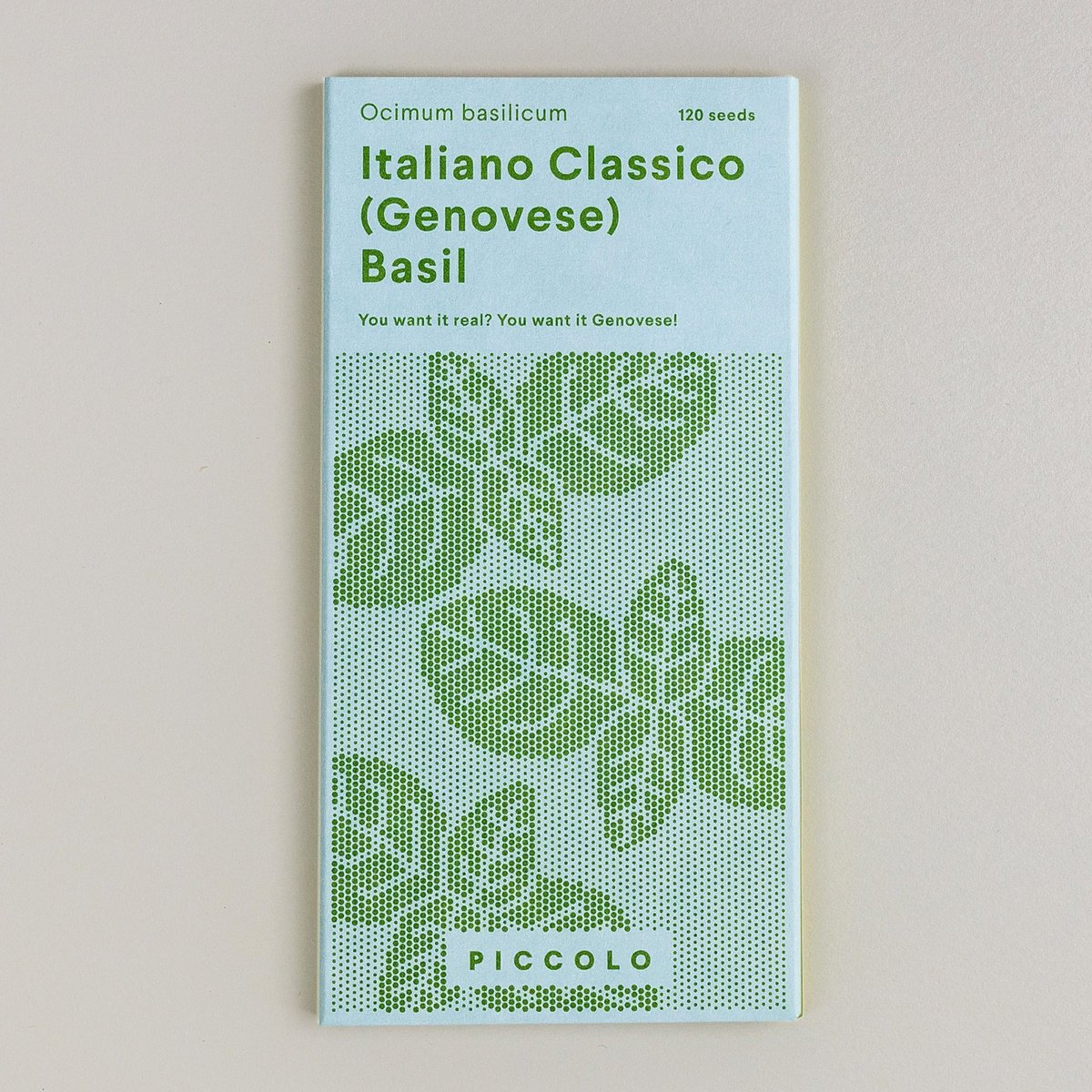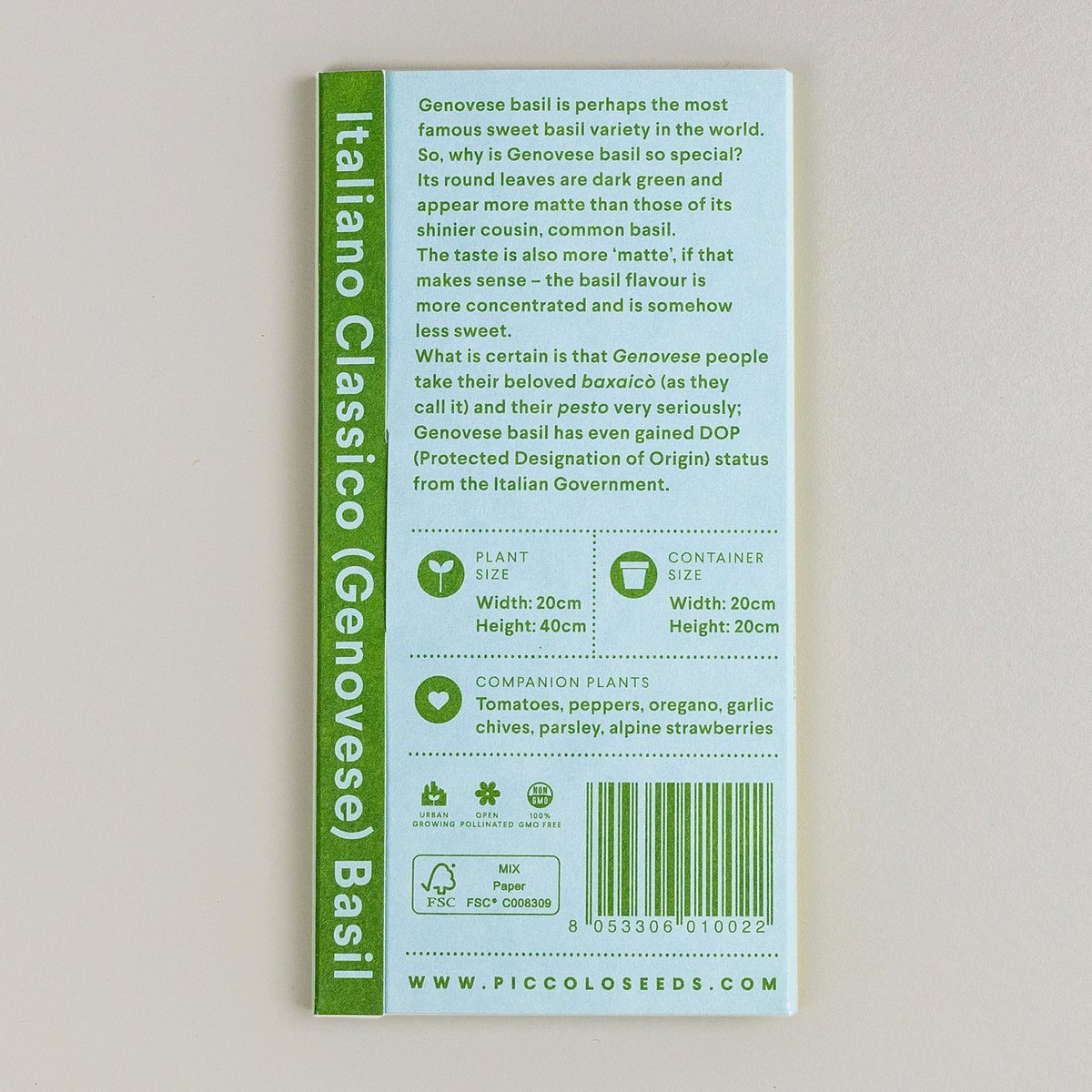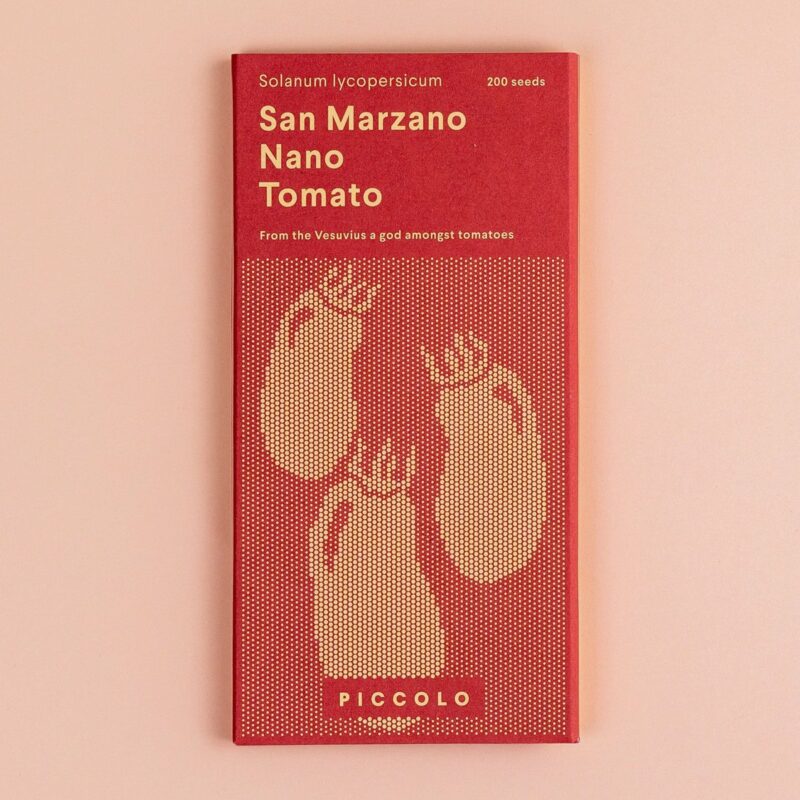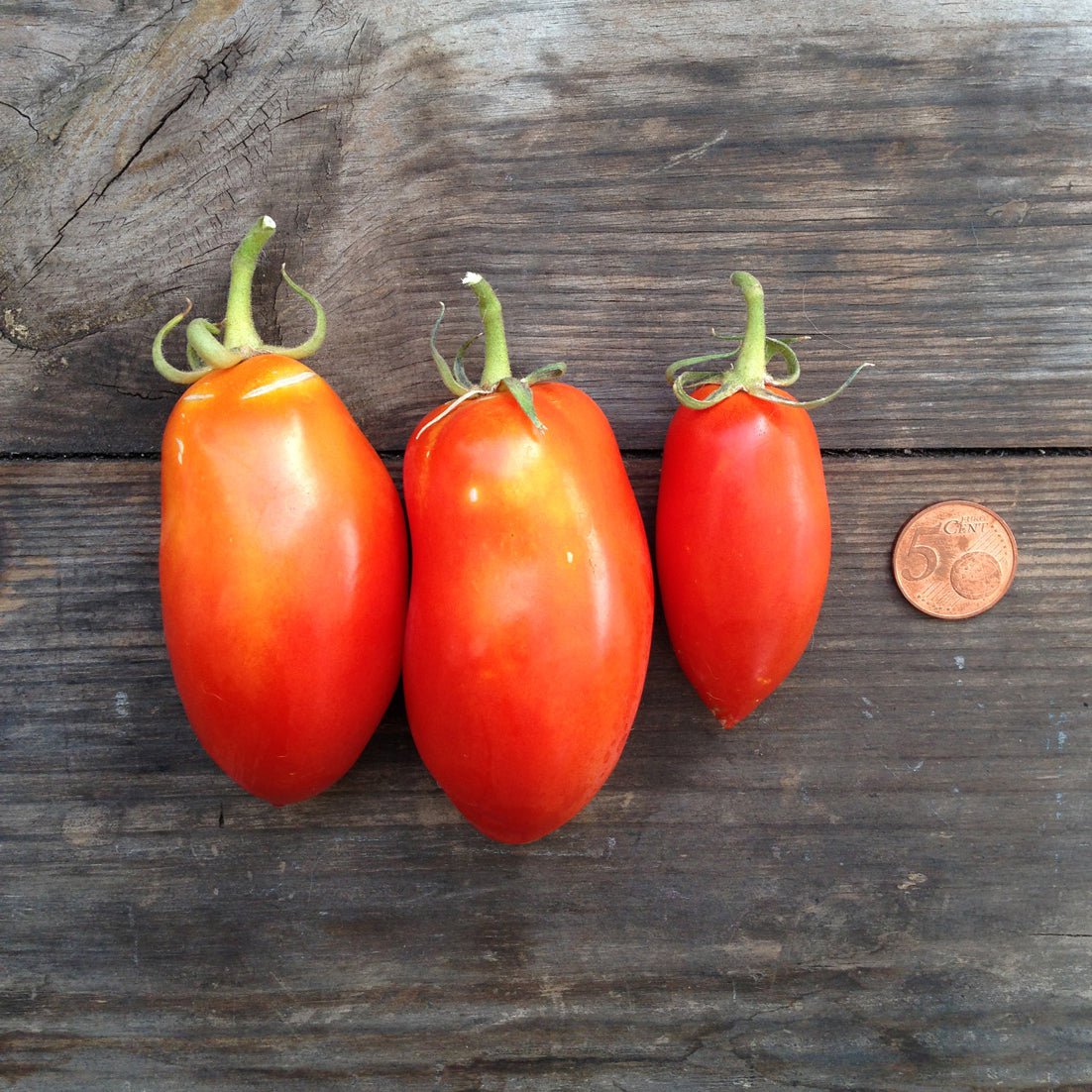3,95 € incl. VAT plus shipping costs
VAT included
excl. Shipping Rate
Be happy - Grow me - Sunflower
DescriptionSets include seeds, starter plant pots made of coconut fiber, fertilizer pads and markers Material: coconut fiber, soil, seeds
Size: 9x7x8cm
3,29 € incl. VAT plus shipping costs
VAT included
excl. Shipping Rate
Petit Gris de Rennes is an extremely sweet, juicy small Charentais-type melon with bright orange flesh. Its name translates to “little gray” for the dark green appearance of its skin before ripening. Originally grown almost four hundred years ago in the garden of the Bishop of Rennes, it is now included in Slow Food's Ark of Taste. Their amazing survival to this day is undoubtedly due to their brown sugar sweetness and intense flavor, which make them the crème de la crème of French melons. This easy-to-grow heirloom variety is an early grower, making it a good choice for northern gardens with short seasons. It is perfect for smaller gardens and containers, with compact vines that only grow to 90cm tall and produce good yields. Latin name Cucumis melo seeds 10 seeds Name Cantaloupe melon Variety Petit gris de Rennes Short description The crème de la crème of French heirloom melons Plant size Height 30cm Width 90-120cm Container size Height 30cm Width 30cm Companion plant Nasturtium, marigold, lavender, snapdragon, Borage, catnip, mint, carrot, aniseed How to grow Open tab Sowing Indoor March-April Outdoor April-June Timing of germination 5-10 days Harvest 60-80 days Sowing spacing 10-15 cm; Depth 3 cm When thinning Not required Cultivation Sunlight Full sun Soil Well-drained, light, moist soil Watering Regular, abundant watering Fertilizing Strong fertilizer Care Expert tip Allow the melons to grow from the ground in a trellis fashion to prevent the fruit from bruising and cracking. Excessive watering before harvest can cause the fruit to taste bland. Supporting pollinators Pollinators increase fruit set. Pests resistant to Fusarium wilt. Harvest when the fruit is a pale orange color and has a pleasant, fruity aroma. Slightly twisting should release the fruit from the vine. For fruits with particularly good flavor, stop watering a week before harvest. Food: Medicinal Properties Melon, which is 90% water, contributes to the body's overall hydration. How to Eat Cantaloupe is usually eaten raw alone or in salads. For a simple yet sophisticated taste, try the well-known Italian antipasto ham and melon dish: aromatic, dry-sliced ham is the perfect wrapper for the sweet juiciness of the melon.
3,29 € incl. VAT plus shipping costs
VAT included
excl. Shipping Rate
The Alpine strawberry Baron von Solemacher is an ancient German variety that produces delicate clusters of deep red, sweet and juicy berries up to 25 mm in diameter. Although we are not sure who the Baron was, we do know that this strain was first offered by FC. Heinemann, a German seed dealer, in 1935. Alpine strawberries are hardy perennial plants that bloom and bear fruit from late spring until the first frost. It is also an early-fruiting variety - the first strawberries can develop just three months after sowing. They make a delicious addition to pastries, but are also very popular raw - young and old will love the sweetness and intoxicating aroma of these strawberries, which will fill any room with a beautiful scent. Latin name Fragaria vesca seeds 250 seeds Name Alpine strawberry variety Baron Von Solemacher Short description An old, sweet German that will tempt your taste buds. Plant size Height 15 cm Width 15 cm Container size Height 20 cm Width 30 cm Companion plant Thyme, borage, lettuce, onions, spinach How to grow Open tab Sow indoors April-May Outdoor April-June Timing of germination 15-30 days Harvest 90-120 days Sowing distance 1-3 cm; Depth 0,2 cm When thinned 10-15 cm Growing in sunlight Partial shade Soil Well-drained, moist and fertile soil Watering Regular, heavy watering Fertilizing Light fertilizer Care Expert tip Tiny strawberry seeds require some patience, but don't give up on them. Sow them on the surface and do not cover them. Make sure that the soil does not dry out - even for a few hours. For best results, keep the soil temperature at around 20°. Supporting Pollinators Borage and thyme attract bees and butterflies and help pollinate strawberries. Pests Grow companion plants that attract ladybugs to prevent aphid infestations. There is nothing easier than picking alpine strawberries. Grasp the small strawberry between your thumb and forefinger, pull gently, eat, and repeat! Food Medicinal properties Alpine strawberry juice can be applied to the skin to eliminate wrinkles. How to eat Alpine strawberries can be cooked and used in jams, cakes and other sweet treats. But in my opinion, the best way to experience their delicious taste and scent is to grow them in your garden and eat them fresh, straight from plant to mouth.
3,29 € incl. VAT plus shipping costs
VAT included
excl. Shipping Rate
When it comes to dwarf tomatoes, Tiny Tim is a reference point in the category, with a pedigree that dates back to the 1800s. Interest in dwarf tomatoes began in Europe in the late 16th century. Over the next four centuries, notable horticulturists and seed breeders contributed to breeding selection, resulting in this compact tomato, developed at the University of New Hampshire in 1949, among many other varieties. The result is amazing: an upright, tree-like plant with short branches, curled to wrinkled leaves of a remarkably deep green color and, last but not least, clusters of delicious, cherry-sized, bright red fruits! Latin name Solanum lycopersicum Name Tomato variety Tiny Tim Short description Not the ukulele player, but still a classic Quantity 200 seeds Plant size Height 30 cm Width 25 cm Container size Height 20 cm Width 20 cm Companion plant Basil, nasturtium, okra, garlic chives, borage, mint, marigold How to grow Open tab Sow indoors February-March Outdoors April-May Timing of germination 10-20 days Harvest 50-60 days Sowing spacing 3-5 cm; Depth 0,5 cm. When transplanting 20-30 cm. Grows in the sun. Full sun. Soil Well-drained, light and fertile soil. Irrigation Water regularly, up to twice a day. Feeding Heavy feeder. Care Expert Tip Dwarf tomatoes can be susceptible to soil-borne diseases because they tend to grow very close to the ground. Prevention is key: Grow them in a container, use sterile potting soil and organic mulch, and cut off ground weeds. Supporting PollinatorsAlthough tomatoes are self-pollinating plants, pollinators increase fruit set. PestsThe strong smell of onions and garlic deters pests from the environment of a tomato plant. A tomato reaches its peak flavor when it turns a deep red color and has a firm texture when the fruit is lightly pressed. Cut them from the plant with scissors, leaving a short stem hanging to prevent rotting. Food Medicinal Properties Rich in nutrients and vitamins. Helps protect cells from aging. How to eat Tiny Tims: They work well with any cherry tomato recipe. They taste good raw in salads, and we find Tiny Tims delicious when roasted. Halve the tomatoes, drizzle with olive oil and sprinkle with salt and a pinch of sugar, oregano or thyme, black pepper and a few cloves of garlic. Place them in the oven in a single layer and roast them until they taste like candy!
3,29 € incl. VAT plus shipping costs
VAT included
excl. Shipping Rate
Cayenne pepper, also known as “guinea spice” or simply “red pepper” (especially in its powdered form), is a hot chili pepper used worldwide to season dishes. The name comes from the city of Cayenne, the capital of French Guiana, and is believed to have originally come from the Caribbean Indian word “kian”. Regardless of the derivation, “cayenne pepper” has now become synonymous with hot paprika. Cayenne pepper generally comes in ground form, either dried and ground into powder or pounded and baked into cakes before grinding. Cayenne peppers have also long been used as an herbal supplement and were mentioned as early as the 17th century in Nicholas Culpeper's book Complete Herbal. Culpeper warned that the chili, with its 30.000 to 50.000 Scoville units, could prove “life-threatening!” While that may seem unlikely, a pinch of cayenne pepper will definitely wake you up! Latin name Capsicum annuum Name Hot Pepper variety Cayenne Long Slim Quantity 40 seeds Plant size Height 70 cm Width 45 cm Container size Height 30 cm Width 30 cm Companion plant Basil, okra, onions, radishes, marigold, mint. How to grow Open tab Sow indoors February-March Outdoors May-June Timing of germination 15-30 days Harvest 70-90 days Sowing spacing 3-5 cm; Depth 0,5 cm. When transplanting 25-35 cm. Grows in the sun. Full sun. Soil Well-drained, light and fertile soil. Watering: Regular, moderate watering. Feeding Heavy feeder. Care Expert Tip Did you know that container-grown peppers can grow as perennials even in colder climates if you bring them indoors for the winter? This way a plant can live up to 10 years! Supporting Pollinators Although peppers are self-pollinating plants, pollinators increase fruit set. PestsGrow companion plants that attract ladybugs to prevent aphid infestations. How to Eat Your Harvests: The more habanero peppers you pick, the more you will harvest! Pick the peppers often – once they are ripe – to ensure a continuous harvest. Food Medicinal Properties As Culpeper said, “cayenne pepper aids digestion, stimulates urination, relieves toothache, protects teeth from decay, soothes a cold stomach, expels stones from the kidney and eliminates poor eyesight.” Trust him. How to Eat Cayenne pepper is commonly used in various cooking styles, from Cajun and Mexican dishes to various Asian dishes. They can be used either in powder form or as whole spices, as is the case in Sichuan-style dishes
3,29 € incl. VAT plus shipping costs
VAT included
excl. Shipping Rate
Habanero Lemon, also called Yellow Habanero, is a lantern-shaped chili that ripens from green to lemon yellow. The pods grow to about 5cm long and 2,5cm wide and have a distinct fruity and lemony flavor (and according to some even an apricot-like aroma). Let's talk spiciness: Our yellow friend doesn't exceed the capsaicin level of an average habanero and is around 100.000-300.000 on the Scoville scale. But that's a lot! Named after the city of La Havana in Cuba, these peppers most likely come from the Amazon region, although they are very popular in the Caribbean. Latin name Capsicum chinense Name Hot Pepper Variety Lemon Habanero Quantity 10 seeds Plant size Height 70 cm Width 45 cm Container size Height 30 cm Width 30 cm Companion plant Basil, okra, onions, marigold, mint, oregano, thyme. How to grow Open tab Sow indoors February-March Outdoors May-June Timing of germination 15-30 days Harvest 90-120 days Sowing spacing 3-5 cm; Depth 0,5 cm. When transplanting 25-35 cm. Grows in the sun. Full sun. Soil Well-drained, light and fertile soil. Water regularly and allow to dry. Feeding Heavy feeder. Care Expert tip Habaneros like it hot: To ensure good germination, the soil temperature should be kept higher than 18°C. Supporting PollinatorsAlthough peppers are self-pollinating plants, pollinators increase fruit set. PestsGrow companion plants that attract ladybugs to prevent aphid infestations. How to Eat Open Tab Harvesting The more habanero peppers you pick, the more you will harvest! Pick the peppers often – once they are ripe – to ensure a continuous harvest. Food medicinal properties Contains a high concentration of vitamins and minerals. May help relieve pain. How to Eat Try them fresh from the plant, chopped and added to salads. Use them as a garnish in Caribbean recipes or add them to salsas, marinades and seasonings.
3,29 € incl. VAT plus shipping costs
VAT included
excl. Shipping Rate
When you think of Italy, you think of a giant, bright green basil leaf on a pizza or on a plate of spaghetti. Well, this basil is most likely Bolloso Napoletano, a popular heirloom variety from the Naples area. It is highly valued for the intense scent of its large, blistered leaves. In ancient times, basil was considered a magical plant and was sacred to Venus, the goddess of love. Perhaps for this reason we find one of the strangest love stories surrounding the basil plant in Boccaccio's Decameron. We don't want to give any spoilers here, so take a trip to southern Italy and ask about Elisabetta da Messina and her beloved Lorenzo. You may be pointed to the nearest pot of fragrant basil.
3,29 € incl. VAT plus shipping costs
VAT included
excl. Shipping Rate
Genovese basil is perhaps the most famous sweet basil variety in the world. The best Genovese basil, known for its use in pesto, is said to be grown in western Genoa, Italy. Why is Genovese basil so special? Its round leaves are dark green and appear duller than those of its shinier cousin, common basil. The flavor is also “matter,” if that makes sense – the basil flavor is more concentrated and somehow less sweet. What is certain is that the Genoese take their beloved Baxaicò (as they call it) and their pesto very seriously; Genovese basil has even received DOP (Protected Designation of Origin) status from the Italian government. Latin name Ocimum basilicum Name basil variety Italiano Classico (Genovese) Quantity 120 seeds Plant size Height 40 cm Width 20 cm Container size Height 20 cm Width 20 cm Companion plant Tomatoes, peppers, oregano, parsley, garlic Chives, Alpine strawberries How to grow Open tab Sowing Indoor February-March Outdoor April-June Time of germination 5-10 days Harvest 40 -60 days spacing when sowing 1-3 cm; Depth 0,3 cm When thinned 3-5 cm Grows in sun Full sun to partial shade Soil Well-drained, light and moist soil Watering Regular watering, do not overdo it Fertilizing Light fertilizer Care Expert tip To promote a beautiful, bushy plant with lots of fragrant leaves Prune Plant this basil early and often by cutting off the top leaves. Cut off the flowers to prevent the leaves from becoming bitter. Supporting pollinators. Attracts bees and butterflies. PestsRepels aphids and mosquitoes. Improves the health of other plants (and people!). Trim the leaves as needed. Since fresh basil wilts soon after harvest and loses both its color and fragrance, it is best to store basil in a glass of water and in a cool, dry, dark place. Use the leftovers from your recipes to make a refreshing herbal tea. Food Medicinal Properties Basil is refreshing and relaxing, stimulates the appetite and lifts the mood. How to eat: Take two cloves of garlic, a pinch of salt, a tablespoon of pine nuts, thirty leaves of Genovese basil, six tablespoons of Parmesan cheese, two tablespoons of Pecorino cheese and half a cup of olive oil. Put them in a mortar in this order and crush them. Mash slowly until you are happy with the taste and consistency. Hey presto, that's pesto!
3,29 € incl. VAT plus shipping costs
VAT included
excl. Shipping Rate
San Marzano tomatoes are without a doubt the gods of the tomato world. And like any other god, they have their own creation myth: According to legend, the first San Marzano seed came to Italy in 1770 as a gift from the Viceroyalty of Peru to the Kingdom of Naples. They were first grown in the village of San Marzano sul Sarno and have since been considered “the most important industrial tomato of the 20th century”. With its firm, thick flesh and sweet taste, this variety was perfect for the production and export of pelati (peeled, whole canned tomatoes), which are very popular around the world. In fact, pizza and pasta wouldn't be the same without these signature, pointy, bright red fruits. And this dwarf, determined edition is no less than a god in miniature! Latin name Solanum lycopersicum Name tomato variety San Marzano nano - Quantity 200 seeds. Plant size Height 90 cm Width 45 cm Container size Height 30 cm Width 30 cm Companion plant Basil, nasturtium, okra, garlic chives, borage, mints Growing instructions Open tab Sowing Indoor February-March Outdoor April-May Timing of germination 10-20 days Harvest 60-80 days Sowing distance 1-2 cm; Depth 0,5 cm. When transplanting 3-5 cm. Growing in the sun. Full sun. Soil Well-drained, light and fertile soil. Irrigation Water regularly, up to twice a day. Feeding Heavy feeder. Care Expert Tip It is well known that compact varieties can become messy as plants grow. Support the plant with a single sturdy stake and cut off any side stems by simply pinching off the suckers with your fingers. Supporting PollinatorsAlthough tomatoes are self-pollinating plants, pollinators increase fruit set. Pests The strong smell of onions and garlic deters pests from the environment of a tomato plant. How to Eat Open Tab Harvesting A tomato reaches its peak flavor when it turns a deep red color and has a firm texture when the fruit is lightly pressed. Cut them from the plant with scissors, leaving a short stem hanging to prevent rotting. Medicinal Properties Rich in nutrients and vitamins. Helps protect cells from aging. Preparation: Create the perfect tomato sauce by sautéing some onions, then adding chopped tomatoes and simmering on low for a long time to bring out the sweet flavor. Add a few torn basil leaves and let stand before using so that the flavor can develop further.



